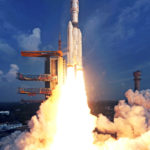RE: What is all about Artemis moon mission?
With the Artemis mission, NASA will use innovative technology to explore more of the moon’s surface than ever before, landing the first woman and the first black man on the moon. We work with commercial and international partners to establish our first long-term presence on the moon. Return in May for scientific discoveries, financial gains, and inspiration for a new generation of explorers, the Artemis Generation. Forge global alliances and explore space for all good while maintaining America’s leadership in exploration. Artemis Base Camp on the surface and Gateway in lunar orbit. These elements allow robots and astronauts to explore more and do more science than ever before.
NASA will launch its first lunar rocket in the Artemis program on Monday morning. This is the first step in a complex series of missions aimed at enabling continued human exploration of the Moon and ultimately Mars.
Artemis I, the mission will send an unmanned capsule over her 42-day moon before splattering it into the Pacific Ocean. This operation will launch the first of the Space Launch Systems program.
Here’s what you need to know about the launch.
Artemis I’s main priority: Testing Orion’s new heat shield as it re-enters Earth’s atmosphere at 40,000 km/h. Pods must survive the fiery descent during the process. If all goes according to plan with the 322-foot rocket, the Artemis II mission will do much the same, but with astronauts on board. Artemis III then aims to send her two astronauts to the moon after 2025. It’s part of his NASA plan to put humans back on the moon for the first time since 1972, according to the budget. Each launch will cost the taxpayer his $4.1 billion, according to the Office of the Inspector General, NASA’s internal oversight agency.
At the tip of the rocket is the Orion Space Capsule, which carries special mannequins (Moonkin Campos, Helga and Zohar) to collect data on the stress the mission will place on future astronauts. About eight hours after launch, the spacecraft will deorbit and begin its 250,000-mile journey to the moon. If all goes well, it will orbit the Moon for over a month before returning to Earth and landing in San Diego.
Her two-hour launch window at Kennedy Space Center begins at 8:33 a.m.




